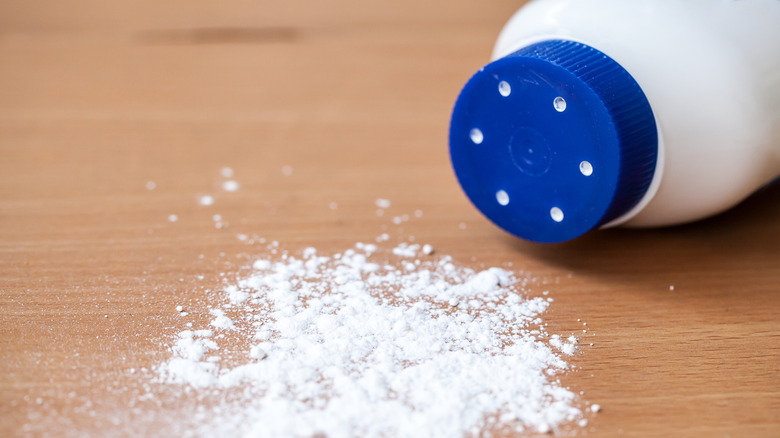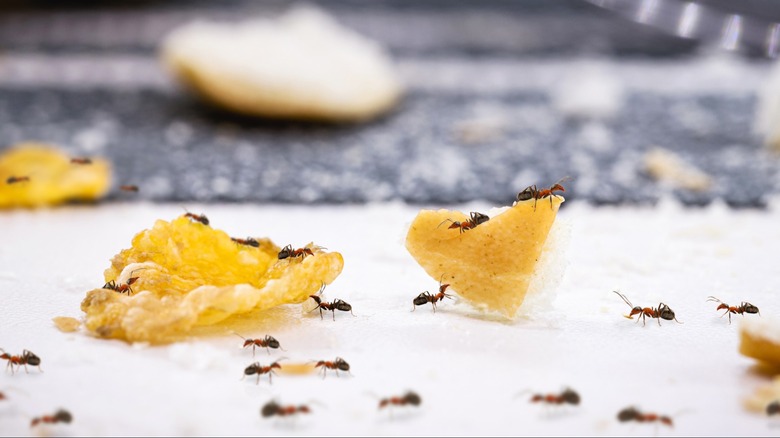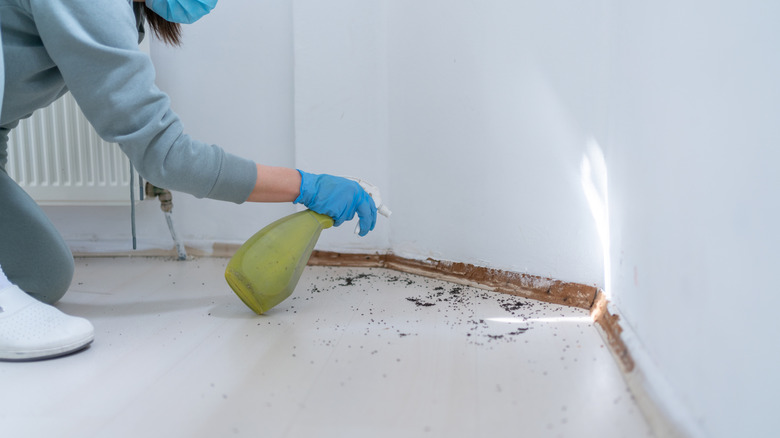Using Baby Powder To Keep Ants Away: Smart Hack Or Waste Of Time?
With so many ways to get rid of ants, baby powder might sound like an old wives' tale, but this common household staple actually holds some merit as a natural pest deterrent. Baby powder works against ants in a couple of ways. Its talcum base physically obstructs ants' movement and makes it difficult for them to navigate previously laid pheromone paths. Unlike chemical repellents that kill ants, baby powder simply gets in the way, creating a barrier that is difficult for them to get through. Using baby powder around entry points like windows and doors encourages the ants to reroute their scent trails.
Of course, its effectiveness varies depending on the species of ant, and environmental conditions. Common household ants and pavement ants show a strong aversion to talcum-based baby powder barriers, especially when mixed with ethanol. Larger, more determined types like the carpenter ant, may eventually find ways to circumvent the treated areas. The powder alone works best in dry conditions as humidity or moisture will make it clump, ruining its usefulness. When applied correctly across ant trails and entry points, baby powder can provide a decent amount of protection before you need to reapply it. This is more of a short-term solution and not something that addresses the root of the problem.
How (& why) baby powder disrupts ant behavior
Ants navigate by using pheromone trails that worker ants deposit to guide colony members to food sources. Baby powder does a solid job of interfering with these communications in multiple ways. Fine particles will absorb and neutralize pheromones, erasing the paths created by the worker ants. Whenever ants encounter the powder, small particles adhere to their bodies and antennae, temporarily blinding them to scent signals and causing disorientation. Studies have shown that ants will typically spend several minutes trying to groom themselves after crossing baby powder barriers.
The physical barrier aspect proves just as important. Ants avoid walking through the loose powder because the unstable footing makes the terrain treacherous. For the best results, the powder line should be unbroken and about half an inch wide. Ants will test for gaps and happily exploit any weaknesses in the barrier. Talcum-based baby powder works better since the particles tend to be more irritating to insects. It is also important to note that this method works better indoors and will not help much if you are trying to eliminate ant hills in your yard. Outdoor elements can quickly blow the powder away or create too much moisture for it to be effective.
When baby powder works best and when to try other methods
While baby powder can prove to be useful in ant protection, it works best as part of a more comprehensive strategy. The powder makes an excellent temporary barrier during an invasion, giving you time to find and eliminate whatever source is attracting the ants in the first place. It is also valuable in protecting obvious ant food sources like pet bowls, sugar containers, or indoor plants — all areas where chemical sprays might be avoided.
Where baby powder loses its effectiveness is against large infestations. In these cases, diatomaceous earth or borax-based baits will prove to be more effective. The powder also needs to be reapplied more often than a commercial repellent, especially in high-traffic areas. However, as a non-toxic, child- and pet-safe option that provides quick results, baby powder remains a valuable hack for eco-conscious households dealing with occasional ant problems. It is a simple and natural way to get rid off ants without poisons or harsh chemicals.


